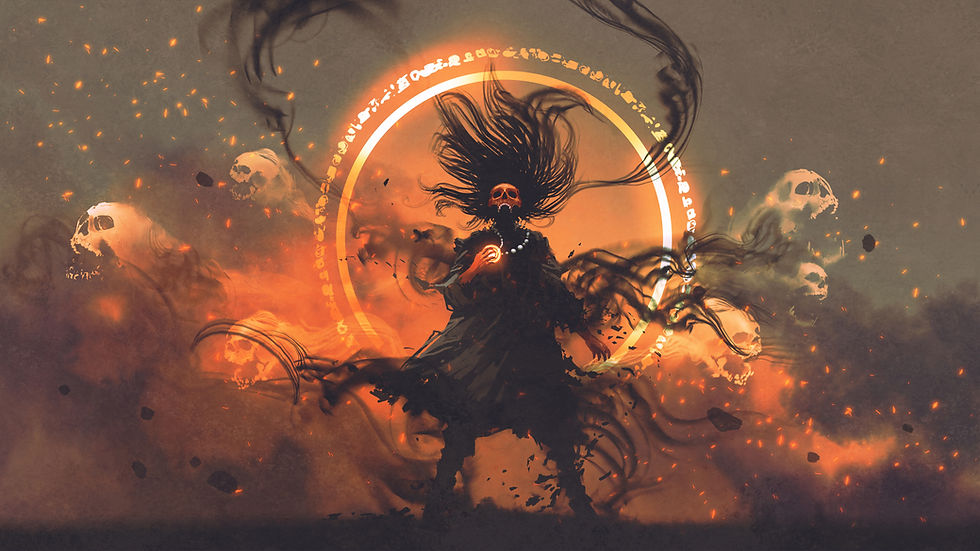The Psychology of Obsession in Gothic Horror (and Why You Can’t Stop Reading It)
- Muna Toubi

- Jun 12
- 3 min read
Updated: Jun 17
Why do we return to stories that horrify us? Why do we linger on scenes of madness, decay, and forbidden longing? Gothic horror doesn’t just entertain — it infects. It feeds on the rawest human impulses: obsession, desire, fear, and guilt. It doesn’t just tell a story — it mirrors us.

In novels like The Monk, obsession is more than a plot point. It is the gravitational centre of the story. A psychological spiral that draws readers inward, whether they want to descend or not. We know Ambrosio will fall. We know darkness is waiting. And still, we turn the page.
The Science Behind the Spiral
Psychologists have long studied why humans are drawn to the morbid. The term "morbid curiosity" describes our need to understand the grotesque and the terrifying. When we read Gothic horror, our brains experience a cocktail of conflicting emotions — adrenaline, fear, desire, and relief. That tension becomes addictive.
In horror fiction, especially Gothic horror, this becomes a mechanism for safe danger. We witness taboo acts, we experience psychological collapse, and we taste the forbidden — all without real-world consequence. This vicarious descent gives us an intimate understanding of our own limits.
Obsession as Identity Disruption
In Gothic literature, obsession is often the point where a character's identity fractures. In The Monk, Ambrosio’s obsession with purity, then lust, then control, reveals the fragility of his constructed self. He’s not a man of faith — he’s a man addicted to the idea of being virtuous. When that identity cracks, the horror is not what happens to him — it’s what is revealed about him.
Obsession in Gothic horror allows us to ask: what lies beneath our curated selves? What if our deepest truths are not virtuous, but vile?
The Gothic Reader’s Role
Here’s the uncomfortable truth: readers of Gothic horror aren’t just observers. We’re participants. We enjoy the unraveling. We anticipate the breakdown. That’s part of the genre’s genius. It implicates us.
In a way, reading Gothic horror is a controlled confrontation with our own darkness. The shadow self, as Carl Jung described, is the part of us we repress. Gothic horror invites it out. It uses obsession not just as plot — but as psychic exposure.
Why You Can’t Stop Reading
You keep reading because Gothic horror understands the human psyche. It knows that beneath your fear is fascination. Beneath your revulsion is a question: What if it were me? And that question is the heartbeat of obsession.
Stories like The Monk do not allow comfortable distance. You don’t just follow Ambrosio — you become him. As his mind fractures, yours bends. As he descends, you wonder how far you would fall.
Ink in Blood: Crafted for the Obsessed
Ink in Blood embraces this psychological entanglement. We create not just books, but immersive experiences. Our editions — annotated, illustrated, and wrapped in ritualistic design — are made for those who want more than a story. They are for those who want a mirror.
Obsession is not a flaw in our readers. It’s a feature. We know you’re not here for escapism — you’re here for exposure. You want to dig through the crypts of the human soul, and you want to do it with art that respects your intelligence and your shadow.
That’s why each release we offer isn’t just a book — it’s a summoning. Of ideas. Of darkness. Of yourself.
Ink in Blood: For readers who don't fear obsession — they feed it.



Comments